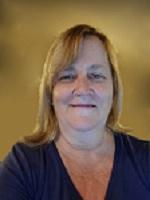

Digital Storytelling Creation Lab: Go Through the Process From Beginning to End |
Explore and create : Creation lab
Julie Jaeger Gwynn Moore
Engage in this fast-paced creation lab to learn how to immerse your students in the storytelling process. Move from author to director to producer of a final product just as your students would. Storytelling starters, media resources and multiple formats will be addressed and shared. Challenge yourself — get creative!!
| Audience: | Library media specialists, Principals/head teachers, Teachers |
| Skill level: | Beginner |
| Attendee devices: | Devices required |
| Attendee device specification: | Laptop: Chromebook, Mac, PC Tablet: Android, iOS, Windows |
| Participant accounts, software and other materials: | Internet browser Google Drive Account |
| Topic: | Storytelling/multimedia |
| Grade level: | PK-12 |
| Subject area: | Language arts, Social studies |
| ISTE Standards: | For Educators: Facilitator
Creative Communicator
|
Purpose:
Actively engage participants in the Digital Storytelling from beginning to end, creating a mini final product as if they were their students in a Remote Learning environment. Introduce the 7 Steps to Assist in Management and Take 6 Elements for Creative production. Tips and Tricks on how to help students find story, how to inspire writing with purpose and intent, how to plan and create the storyboard, looking for imagery and essence of their product, and finally how to guide students through the process of directing and producing their digital product, Familiarize participants with Copyright and provide resources on free to use and share media for production. Explore equitable options through a variety of final products created on free and easily available options.
Objectives
•Participants will go through the Digital StoryTelling process ~ PreProduction, Production and Post Production, in the same way they would with their students, moving them from author of their story to storyboard creator, decision making director, and finally producer of their work with purpose and intent for audience.
• Participants will review the difference between StoryTelling and Multimedia show and tell products through examples. Participants will leave with several ideas of how to stimulate story.
• Participants will experience the Elements of Digital StoryTelling and recognize the difference between a "Tell About" Multi-media and a "Meaning Making" Digital StoryTelling product through activities they can use with their students.
• Participants will participate in a mini storyboard planning process to experience how it leads students to analyze and critical think throughout the process.
• Participants will be introduced to management tools, importance of copyright, free to use resources, and a variety of final production options.
• Participants will view a variety of exemplar student products throughout this session.
• Participants will be provided information on resources for final production options to assist in equitable opportunities to create digital storytelling products.
• Evidence of Success would be the beginning of a final product and an idea or plan of where they would like to start with their students.
Estimated TimeFrame for 90 min Creation Lab
10 min - Welcome/Introduction of presenters and review of the standards being addressed in this presentation.
Review the concept of StoryTelling done Digitally compared to a Bed to Bed Story or a report format. StoryTelling has purpose and intention and is memorable....sticking power. Review types of StoryTelling products and share one or more short student examples. Share resources and resource page that will be used throughout the session and invite participants to join in and create their own mini storytelling project.
10 min - Introduce the Digital StoryTelling process and management tools to facilitate students movement through the process including checkmarks and deadlines.
Introduce Step One - Writing the narrative. Participants will be shown several ways to help students start story. Participants will be invited to start their own story with assistance of an image or story starter or topic of interest. Introduce Talk to Text to expedite the writing process...telling story into device which will write story for them.
10 min - Introduce Storyboard, breaking their story into scenes and deciding the essence they want to convey to their viewers. This thinking process moves students from author to director and raises thinking to the highest levels of Blooms as students decide just what type of imagery, video shots, music, voice and sounds are needed to bring their essence to life. This is another management tool that holds students accountable when working on the product.
10 min Introduce the Creative Elements of StoryTelling and participants will review options based on technology available to their students.
15 min - Finding resources - participants will be introduced to several copyright free to use and share resources they can use and use with their students. Review of imagery over images to create the essence of their final product. Using their storyboard as a guide, this time will be used to search for images, music and sounds that could work with their mini story to create the essence they desire.
25 min - putting it all together in a format - participants will use any format they have available - on their device, online, in cloud or app on device to create as much of final product as they can get through.....voice over text of text and and insert images, music and sounds.
5 min - share final products and/or show student final products as examples. Some will be shown throughout the process.
5 min - wrap up, questions and remind of resources available.
NOTE: if 60 minute session is chosen, the following modifications would be made
~the process stages would be shorted by 5 mins each by minimizing viewing of complete models, resource time would be minimized by 5 minutes and the creation time would be reduced by 10 minutes by offering some process pieces that can be remixed to meet the 60 minute timeline.
Support for Digital StoryTelling via MultiMedia
Digital StoryTelling and Media Making are not synonymous. Digital StoryTelling requires intention and meaning making. Understanding the essence of story and its ability to make meaning happen for all is at the heart of Digital StoryTelling. The media is not what is important...the story is!!
ASCD: Understanding How Young Children Learn Children learn through story. Children understand the concept of story for the purpose of learning.
Bernajean Porter: The Art of Digital StoryTelling www.digitales.us "Digital Storytelling Across the Curriculum | Creative Educator." 2008. 27 Sep. 2015
Ohler, Jason B. Digital storytelling in the classroom: New media pathways to literacy, learning, and creativity. Corwin Press, 2013 Sessoms, Diallo, “Stories keep memories alive. Your life stories as well as your family’s stories about he most memorable life experiences are worth preserving.”
Paige Baggett: Educational Uses of Digital StoryTelling http://digitalstorytelling.coe.uh.edu/view_story.cfm?vid=318&otherid=featured&d_title=Featured%20Digital%20Stories When students are engaged in the process of creating a digital story, they must synthesize a variety of literacy skills for hte authentic product: researching, writing, organizing, presenting, interviewing, problem-solvin, assessing, as well as employ8ing interpersonal and technology skills.
Merilee Sprenger: How to Teach so Students Remember Brain research shows us that learning needs connections, memories, something to stick to. Stories create memories and connections that influence memory. ....understanding of the brain structures that influence memory, and learn how teachers can promote better recall for daily classroom learning, high-stakes tests, and beyond.
Top three levels of Benjamin Blooms Taxonomy revised (Anderson, Krathwohl 2001) look at elevated thinking as analyzing, evaluating and creating which are essential parts of the decision making StoryBoard Phase of the Digital StoryTelling process. Use of verbs instead of nouns puts Blooms into action which is exactly what the Storyboard is...the action and planning behind the product.
Anderson/Krathwohl The Second Principal http://thesecondprinciple.com/teaching-essentials/beyond-bloom-cognitive-taxonomy-revised/ Krathwohl
A Revision of Blooms http://www.unco.edu/cetl/sir/stating_outcome/documents/krathwohl.pdf. (Zak, Why Your Brain Loves a Good Story 2014)
Digital StoryTelling requires intention and meaning making. Understanding the essence of story and its ability to make meaning happen for all is at the heart of
Digital StoryTelling. The media is not what is important...the story is!! “If you can harness imagination and the principles of a well-told story, then you get people rising to their feet amid thunderous applause instead of yawning and ignoring you.” (Harvard Business Review, Storytelling That Moves People, Fryer, 2003)



Gwynn Moore, Chair of the Digital StoryTelling Network and 2020 Digital Storytelling Creativity Storytelling Award Winner, is the Instructional Media/Technology Teacher at Aurora Frontier P-8 in Aurora Colorado and an educator for 28 years. In 2019 she became an ISTE Certified educator. She has presented at ISTE: 2010-2020. CO InnEdCo conferences: 2010-2019. Recognitions: ISTE Certified Educator, Microsoft Innovative Educator, Microsoft Certified Teacher, Google Level 1 & 2 Certified Teacher, Certified Google Teacher Leader, IBM AI Certified Educator, Adobe Certified Educator, EdPuzzle Certified Educator, FlipGrid Ceterfied Educator, Tech4 Learning Innovative Educator, and a Discovery Star Educator.
Address Individual Differences in Problem-Solving Instruction: An Alternative Design Model
Creating Artifacts of Learning Through Moviemaking
Realizing Your Classroom Technology Goals